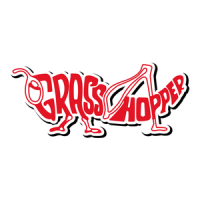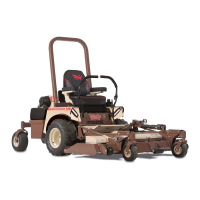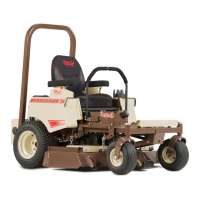5
WORK SAFELY - FOLLOW THESE RULES
The designed and tested safety of this
equipment depends on it being
operated within the limitations as
explained in this manual. Read manual
before operating.
TRAINING
nn
nn
n Safety instructions are important! READ
THIS MANUAL AND ALL SAFETY
RULES.
nn
nn
n Know your equipment’s controls and how to
stop tractor, engine and attachments quickly
in an emergency.
nn
nn
n To avoid accident or injury, do not allow any-
one to operate this equipment without proper
instruction. Any person who operates this
equipment MUST be instructed in and ca-
pable of the safe operation of the unit, its
attachments and all controls.
nn
nn
n Do not allow children or unqualified individu-
als to operate equipment.
PREPARATION
nn
nn
n Always wear relatively tight and belted cloth-
ing to avoid entanglement in moving parts.
Wear sturdy, rough soled work shoes. Never
operate tractor or implements in bare feet,
sandals or sneakers.
nn
nn
n This machine produces sound levels in excess
of 85 dBA at the operator ear and can cause
hearing loss through extended periods of ex-
posure. Wear hearing protection when
operating this machine.
nn
nn
n Ensure attachments are properly mounted,
adjusted and in good operating condition.
nn
nn
n Make sure driveline spring-activated locking
collar slides freely and is seated firmly in the
tractor PTO groove.
nn
nn
n Check brake action before you operate. Ad-
just or service brakes as necessary.
nn
nn
n Ensure all safety switches function properly.
See Operation section for details.
nn
nn
n Remove accumulated debris from attachment
and tractor to avoid fire hazard.
nn
nn
n Ensure all safety shielding is in good condition
and properly installed.
nn
nn
n Ensure either the discharge shield, restriction
plate, or complete vacuum attachment is in-
stalled.
nn
nn
n Ensure all safety decals are installed and in
good condition.
nn
nn
n Use correct counterweights when certain at-
tachments are installed (see specific
accessory installation instructions).
nn
nn
n Inspect area to be cut removing stones,
branches and other debris that might be
thrown causing injury or damage.
nn
nn
n Evaluate the terrain to determine what acces-
sories and attachments are needed to
properly and safely perform the job.
nn
nn
n Low-hanging branches and similar obstacles
can injure the operator or interfere with mowing
operation. Before mowing, identify potential
obstacles such as low-hanging branches, and
trim or remove those obstacles.
nn
nn
n Never permit any person, other than the op-
erator, to ride or board the tractor or
implements at any time.
nn
nn
n Operate only in daylight or good artificial
light.
FUEL HANDLING SAFETY
nn
nn
n In certain conditions, gasoline is extremely flam-
mable and highly explosive. A fire or explosion
from gasoline can burn you and others and can
damage property.
nn
nn
n Fill the fuel tank outdoors, in an open area,
when the engine is cold. Wipe up any gasoline
that spills.
nn
nn
n Do not fill the fuel tank completely full. Add
gasoline to the fuel tank until the level is ¼" to ½"
(6 mm to 13 mm) below the bottom of the filler
neck. This empty space in the tank allows
gasoline to expand.
nn
nn
n Never smoke when handling gasoline, and stay
away from an open flame or where gasoline
fumes may be ignited by a spark.
nn
nn
n Store gasoline in an approved container and
keep it out of the reach of children. Never buy
more than a 30-day supply of gasoline.
nn
nn
n Always place gasoline containers on the ground
away from your vehicle before filling.
nn
nn
n Do not fill gasoline containers inside a vehicle or
on a truck or trailer bed because interior carpets
CAUTION
Rev. 06-08

